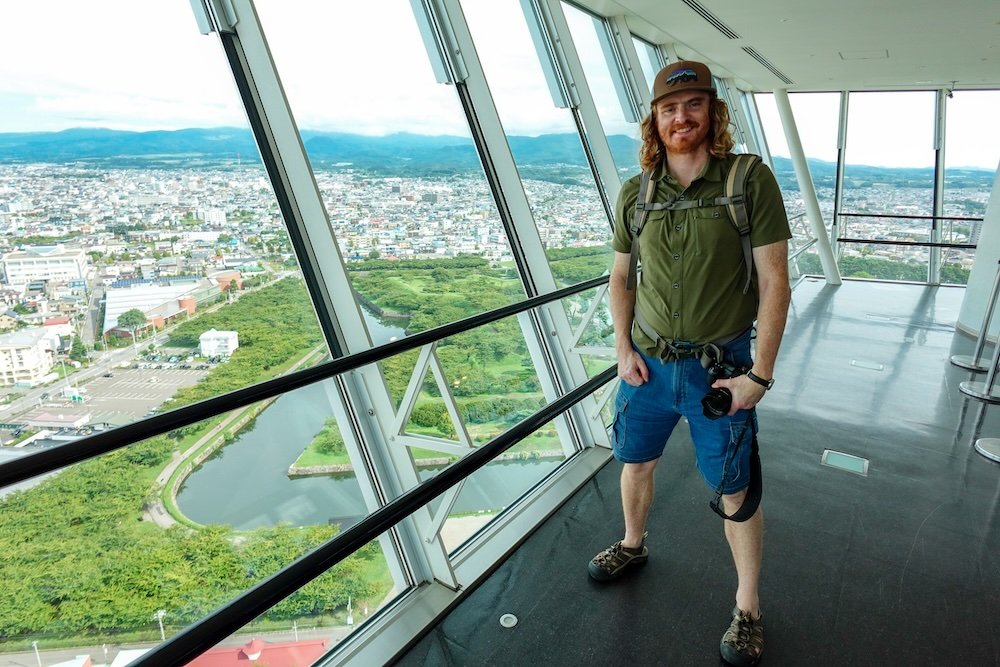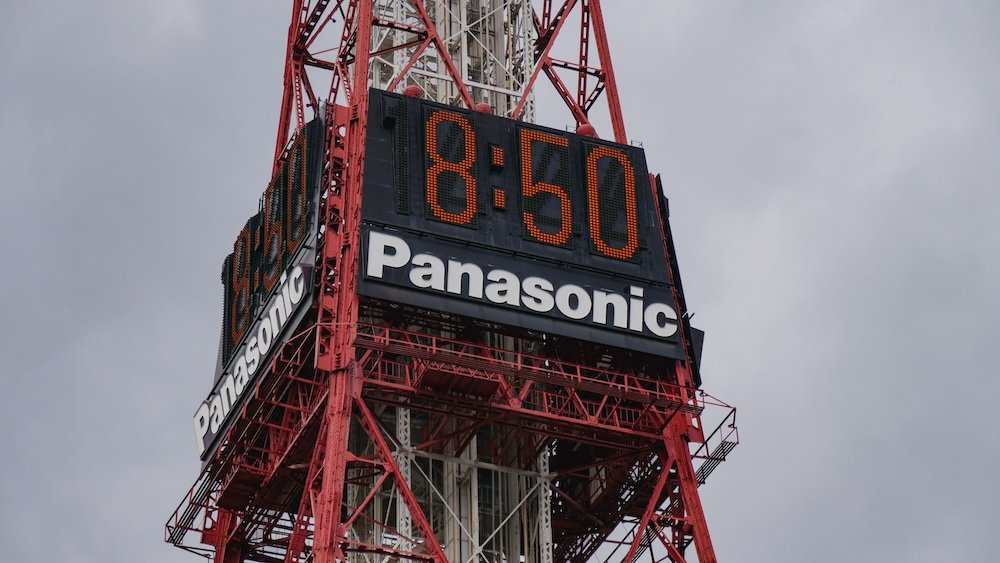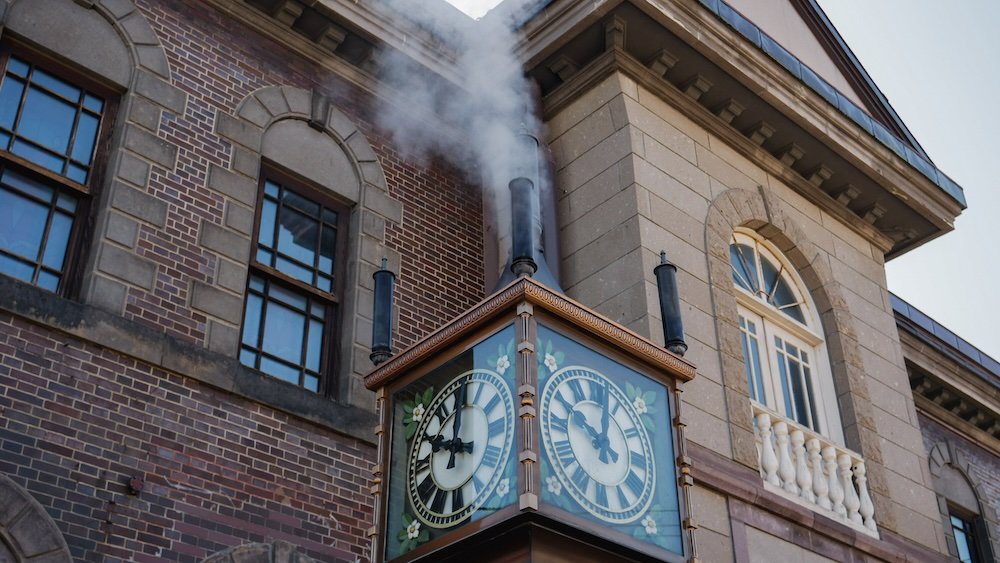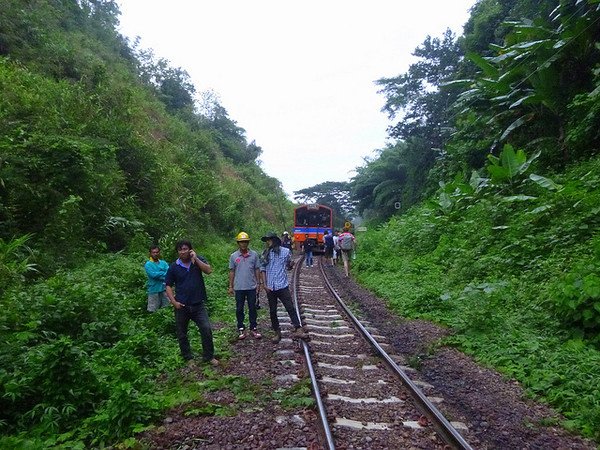As globe-trotters and jet-setters, we often find ourselves navigating world time zones. Among these, Japan Standard Time (JST) stands as a key marker in the East, playing a crucial role in global timekeeping. This guide takes a closer look at JST, not just as a time zone, but as an essential tool for travelers, offering insights that go beyond merely adjusting your watch.
A Brief History of Time Zones
The concept of time zones, developed by Sir Sandford Fleming in the late 19th century, forever changed the way we perceive time across the globe. Fleming’s system divides the world into 24 longitudinal sections, each representing an hour of the day. For modern travelers, understanding these time zones is essential, helping us plan and adjust as we move between different regions and time frames.
Japan Standard Time: A Traveler’s Necessity
For those venturing to Japan, knowing Japan Standard Time is more than a helpful tip—it’s essential. Unlike many countries that juggle time changes with daylight saving, Japan remains steadfast in its adherence to JST throughout the year. This consistency provides an anchor for both locals and visitors, offering a sense of stability in the constantly shifting world of international travel.

The Cultural Significance of JST in Travel
Understanding JST isn’t just about setting your watch when you land at Narita or Haneda Airport. It’s about synchronizing with Japan’s cultural rhythm. Tokyo’s fast-paced streets, Kyoto’s tranquil temples—each operates on a schedule where punctuality is key, and time is deeply respected. Tuning into JST allows you to better connect with the flow of daily life in Japan, where being on time is not just a courtesy but an expectation.
source: Λsk Λbout Guide on YouTube
In this globally connected world, being aware of time zones like JST is more than a travel hack—it’s part of cultural literacy. It helps you build bridges across time and space, ensuring that while we may live in different hours, we share the same moments. Whether you’re scheduling a video call back home without waking your family in the middle of the night, or planning an itinerary that maximizes your daylight hours in Japan, understanding JST is key to navigating these challenges smoothly.
Embracing the Journey Through Japan Standard Time
As we explore the details of Japan Standard Time in the following sections, we embark on a journey that reveals not just the mechanics of a time zone, but the cultural and temporal heartbeat of Japan. This isn’t just about learning how to adjust your watch—it’s about immersing yourself in the rich tapestry of Japanese life that unfolds with each hour, minute, and second under the steady rhythm of JST.

Understanding Time Zones
At the core of our interconnected world lies the fascinating concept of time zones—a marvel of human innovation that slices the Earth into temporal sections, each aligned with the planet’s rotation. These zones are essentially 24 divisions of longitude, ensuring that noon in each one roughly corresponds to when the sun is highest in the sky. This system brings a sense of order and harmony to the world’s varying geographies, allowing different regions to operate on their own schedule while remaining connected to the global clock.
source: Only In Japan * Go on YouTube
Timekeeping on a global scale is like a finely tuned orchestra, where each time zone plays its part in the symphony of daily life. This system, born out of both geographical necessity and international cooperation, is particularly important for travelers. When you fly across countries and oceans, you’re not only covering physical distances but also crossing invisible time boundaries. This shift is more than just resetting your watch—it’s about adjusting your body’s internal clock to the rhythm of a new place. It’s the shift from the familiar pace of home to the unfamiliar tempo of a foreign time zone.
Navigating the Turbulence of Jet Lag and Time Zone Transitions
For many, jet lag is the unwelcome companion of long-distance travel. It’s the result of rapid time zone shifts, which disrupt the natural circadian rhythms that govern our bodies. These rhythms are finely tuned to the 24-hour day, so when you jump several time zones in a matter of hours, your internal clock falls out of sync with the local time. The result? Symptoms like fatigue, insomnia, and general disorientation—your body’s way of protesting against the abrupt change.
But don’t worry! The first step to overcoming jet lag is understanding how it works. By being aware of time zones, you can start planning ahead, adjusting your sleep schedule a few days before departure to gradually align with your destination’s time. Think of it as tuning an instrument before a performance—a bit of preparation ensures a smoother transition.
Additionally, being time zone-savvy helps you design a travel itinerary that aligns with the day-night cycle of your destination. Imagine arriving in Tokyo, eager to explore the bustling Tsukiji fish market, only to discover it’s closed because you forgot to account for the time difference. Or scheduling an important video call back home, only to realize it’s the middle of the night for your colleagues. Small mistakes like these can snowball into a series of travel frustrations.

Japan Standard Time (JST) Detailed
The Geographical Canvas of JST
Japan Standard Time (JST) stretches across the entire archipelago of Japan, from the snowy northern island of Hokkaido to the tropical southern reaches of Okinawa. This singular time zone serves as the temporal heartbeat of the nation, harmonizing a land where ancient traditions meet cutting-edge innovations. Known as the “Land of the Rising Sun,” Japan begins its day early, with the first light of dawn gracing the country before many others around the world.
The Distinct Characteristics of JST
UTC Offset: The Backbone of JST
At the core of Japan Standard Time is its UTC offset, which is UTC+9. This means that Japan is nine hours ahead of the Coordinated Universal Time (UTC), the global standard for timekeeping. For travelers, this time difference creates a unique experience—while you’re enjoying the day in Japan, much of the world is still shrouded in night. This offset gives you a temporal advantage, allowing you to start your day while others are still sleeping, adding a certain thrill to your journey.
Absence of Daylight Saving Time: A Steady Temporal Anchor
Unlike many countries that adjust their clocks for daylight saving time, Japan remains constant. JST does not change throughout the year, providing travelers with a steady, reliable time system. There’s no need to worry about adjusting your watch back or forward during your stay—Japan’s timekeeping is as unchanging as the North Star. This consistency offers a comforting sense of stability as you navigate the fast-paced cities or tranquil countryside.
JST in the Global Timekeeping Tapestry
On the global stage, JST stands out as a time zone that contrasts and connects with others in subtle ways. It’s one hour ahead of China and Korea, giving Japan a slight but notable lead in the region. Meanwhile, Europe experiences its afternoon as Japan enjoys its evening, and the Americas are still under the cover of night or just waking up to the dawn.
For the international traveler, this alignment can feel like a puzzle of connections. Picture yourself standing at Shibuya Crossing in Tokyo at 9 PM, surrounded by the neon lights—it’s lunchtime in London, and New York is just starting its day. This time difference is more than just numbers; it’s a glimpse into the parallel worlds happening around you. As you wander the streets of Kyoto or indulge in sushi in Tokyo, you’re living in a different temporal chapter than much of the world.

Historical Context of Timekeeping in Japan
Evolution of Timekeeping in Japan
The history of timekeeping in Japan is a captivating reflection of the nation’s transformation over the centuries. Before modern clocks, ancient Japan, like many other early civilizations, relied on natural cues to measure time. Sundials and water clocks, known as “Rokoku,” were central to the way early Japanese society tracked the passage of hours. These methods, however, were deeply intertwined with the natural rhythms of seasons and daylight, meaning that the length of an hour would change depending on the time of year.
Everything began to shift during the Meiji Restoration in the late 19th century. As Japan opened itself to the world and began adopting Western ideas, its timekeeping methods also evolved. The traditional Japanese system, which divided the day into six equal periods of daylight regardless of the season, gradually gave way to a standardized system brought in from the West. This was more than a technical change—it represented a profound shift in how the Japanese people viewed time, as the nation realigned itself with the international community.
Shift to Standard Time and Its Significance
The adoption of standard time was a pivotal moment in Japan’s history. As the country moved to standardize its clocks, it became a critical part of Japan’s broader modernization efforts during the Meiji era. This shift was essential for the growth of industry and commerce, allowing Japan to synchronize its economy with international markets and establish efficient communication and transportation networks.
But this transition also had deeper cultural meaning. Moving from a nature-based understanding of time to a more abstract, uniform system reflected the nation’s rapid embrace of modernization and technology. It marked Japan’s departure from its traditional ways of life as it transformed into a more industrialized and globalized society.
Establishment of Japan Standard Time
Japan Standard Time (JST) was officially established on January 1, 1888, aligning Japan with the global push for standardizing time that followed the International Meridian Conference of 1884. By setting its time zone at UTC+9, Japan not only improved communication and coordination with Western countries but also solidified its position as a modern, internationally engaged nation.

Practical Implications of JST for Travelers
Navigating Itineraries in the Realm of JST
When embarking on a journey to Japan, where Japan Standard Time (JST) governs all, planning your itinerary with care is essential. From the peaceful sunrise at a Zen temple to the dazzling neon lights of Tokyo’s nightscapes, every experience in Japan unfolds according to the rhythm of JST. For the astute traveler, it’s about aligning yourself with Japan’s unique temporal cadence.
Crafting an itinerary around JST requires a thoughtful balance. You’ll want to sync your body clock with Japan’s time to fully immerse yourself in the experience. Jet lag can be tricky, but with a little foresight, you can minimize its effects. Consider adjusting your sleep schedule a few days before your departure to gently ease into JST, ensuring that your first morning in Japan is met with a clear mind and a ready spirit.
One of the benefits of traveling in Japan is its absence of daylight saving time, making timekeeping straightforward. Whether you’re exploring Kyoto’s temples, Osaka’s markets, or the wild beauty of Hokkaido, you won’t have to worry about clock changes. The consistency of JST across the entire country means that from the snowy peaks of Nagano to the subtropical breezes of Okinawa, time operates smoothly, making planning much easier.
JST and the Ballet of Flight Schedules
When it comes to air travel, JST dictates flight schedules with precision. For international travelers, arriving in Japan early in the morning is common, perfectly aligned with JST’s operational hours. While early arrivals grant you a full day to explore, you’ll want to keep in mind hotel check-in times and the inevitable fatigue from long-haul flights. Planning ahead for rest or activities upon arrival can help you ease into the day without feeling overwhelmed.
Japan’s major airports—Narita, Haneda, and Kansai—operate like clockwork under JST. Domestic flights, airport shuttles, and even public transport systems run with remarkable punctuality. Staying aware of JST not only ensures that you catch your flights on time but also helps you navigate Japan’s famously efficient transportation system with ease.
Staying Connected Across Time Zones
In today’s hyper-connected world, staying in touch with people back home is important, but JST can pose challenges when coordinating across time zones. Whether for work or personal reasons, syncing JST with time zones from other parts of the world requires thoughtful planning. The time difference can make scheduling calls or video chats feel like a delicate balancing act.
To bridge the gap between JST and your home time zone, make use of tools like world clock apps to easily visualize the time difference. Whether it’s arranging a call with family in the early evening or connecting with colleagues at the start of their workday, finding that sweet spot where time zones overlap in mutual convenience will ensure seamless communication. It’s a dance that requires some temporal gymnastics, but with a little foresight, it’s easily managed.

Navigating JST During Your Visit
Synchronizing with Local Time Upon Arrival
When you step off the plane and into the vibrant world of Japan, your first challenge is aligning yourself with Japan Standard Time (JST). This adjustment goes beyond simply setting your watch forward—it’s about recalibrating your internal clock to Japan’s rhythm. Combatting jet lag requires a bit of strategy. Start by adjusting your sleep during the flight, then, upon arrival, dive into the local routine. Engage in light activities and spend time outdoors to soak in natural daylight, which helps reset your body’s internal clock. The key is to gently ease into the rhythm of JST, allowing yourself to fully embrace the excitement of your Japanese adventure from the start.
Understanding Time-Related Cultural Nuances
In Japan, punctuality is more than just a virtue—it’s a deeply ingrained part of the culture. Time is treated with precision and respect, something you’ll notice right away. Whether it’s the impeccably timed departure of the bullet trains or the punctuality of social events, being on time in Japan is not only appreciated but expected.
As a traveler, adapting to this culture of timekeeping goes beyond just being punctual—it’s a sign of respect. Showing up on time for a tea ceremony, a dinner reservation, or a meeting shows that you value the time of others. In Japan, time is a shared commodity, and lateness can disrupt the harmony of social interactions. It’s more than a faux pas; it’s a cultural misstep that can be easily avoided by embracing Japan’s respect for time.
Timing Your Adventures: Tourist Attractions, Public Transport, and Businesses
Understanding the operating hours of Japan’s many attractions, public transportation, and businesses is crucial for making the most of your time. Major tourist spots like Tokyo Skytree or Kyoto’s Kinkaku-ji operate on strict schedules, so it’s important to plan your visits around their opening and closing times to ensure you don’t miss out on key experiences.
Japan’s public transport is legendary for its punctuality. Trains and buses run with remarkable precision, making them incredibly reliable but also requiring you to be equally punctual. If you miss a Shinkansen train because of a time miscalculation, it could throw off your entire itinerary, so it’s wise to keep a close eye on the time.
When it comes to business hours, Japan’s schedule might differ slightly from what you’re used to. Many businesses, especially in larger cities, open later in the morning and stay open well into the evening. However, in smaller towns, shops may close earlier, following local customs and lifestyles. Additionally, be aware of the Japanese holiday calendar—many businesses observe holidays, which can affect opening hours and availability, so it’s a good idea to check in advance if your visit overlaps with one of these days.

JST in the Context of Regional Travel
Juxtaposing JST with Neighboring Time Zones
Compared to East Asian time zones, Japan Standard Time (JST) stands distinct yet connected to its neighbors. Japan sits at UTC+9, sharing this time zone with South Korea, while being an hour ahead of China (UTC+8) and two hours ahead of Thailand and Vietnam (UTC+7). For regional travelers, understanding these time shifts is essential—it’s like learning the steps of a dance, with each country moving to its own rhythm.
This interplay between time zones adds a layer of fascination to your travels. Imagine watching the sun set in Tokyo and then, after a short flight, watching it rise again in Beijing. These subtle shifts, while easy to adjust to, can enrich your travel experience, offering new perspectives on the diversity of the region—not just culturally, but in how time itself is experienced.
Orchestrating Multi-Country Itineraries in East Asia
For those planning a multi-country trip through East Asia, JST serves as a crucial starting point. Crafting an itinerary across multiple destinations requires careful coordination of flight schedules, hotel bookings, and activity timings. Each leg of the journey brings a new time zone into play, and staying on top of these shifts is key to a smooth experience.
Planning a trip across several time zones is like conducting an orchestra, where each time zone represents a different movement in the composition. The trick is to stay attuned to these time changes, adjusting your internal clock as you hop from country to country. Tools like world clock apps become invaluable, helping you remain in sync with each location and ensuring you never miss a beat.
The Ripple Effects of Time Differences on Business and Cultural Exchanges
In the world of regional business and cultural exchanges, time zone differences take on greater importance. For business travelers and companies, understanding how JST aligns or differs from neighboring countries is crucial when planning meetings, conference calls, or negotiations. Overlooking these time differences can lead to missed opportunities or even cultural missteps, particularly in East Asia, where punctuality is highly valued.
On a cultural level, these time variations also influence regional interactions. From festivals and celebrations to live broadcasts, events must be synchronized to accommodate different time zones. Whether it’s regional television programming, international gaming tournaments, or social media trends, timing is everything. These carefully orchestrated schedules allow people across East Asia to connect, celebrate, and engage with one another, regardless of their local time zone.

Planning Your Japan Trip Around JST
Once you’ve wrapped your head around the fact that Japan runs on JST and never changes the clocks, the next step is asking a more practical question:
“How do I actually plan my days around this?”
Because the moment you land, it’s not just theory anymore. It’s your energy levels, your sleep, your train times, and whether you’re wide awake at 3:00 a.m. staring at the hotel ceiling.
Let’s turn JST from an abstract concept into a tool you can actually use.
How JST Fits With Where You’re Coming From
You don’t need to memorize exact time differences for every city on earth, but having a rough sense of how far your body clock will be “off” helps you plan that first week.
Here’s a simple, broad-strokes look at what you’re dealing with:
| Where You’re Coming From | Typical Time Difference to Japan (JST) | Jet Lag Difficulty (Subjective) |
|---|---|---|
| Western Europe | Japan is about 7–8 hours ahead | Medium (big shift but manageable) |
| Eastern Europe | Japan is about 6–7 hours ahead | Medium |
| UK / Ireland | Japan is about 8–9 hours ahead | Medium–Hard |
| East Coast North America | Japan is around 13–14 hours ahead | Hard (day flips into night) |
| West Coast North America | Japan is around 16–17 hours ahead | Hard (complete “future jump”) |
| Southeast Asia (e.g. Thailand) | Japan is 2 hours ahead (roughly) | Easy |
| Australia / New Zealand | Japan is a few hours behind / ahead depending on season | Easy–Medium |
Your body doesn’t care about UTC or theory. It cares about when you normally eat, sleep, and see daylight. The bigger the shift, the more kind you need to be to yourself those first 2–3 days.
Avoiding Jet Lag Wipeout on Arrival
You don’t want your first memory of Japan to be you falling asleep on the Yamanote Line and accidentally doing three loops around Tokyo.
Before You Fly
A few days before departure, start nudging your routine toward JST:
- Go to bed 1–2 hours earlier or later (depending on direction) each night.
- Shift meal times a bit closer to when you’ll eat in Japan.
- Cut back on late-night screen time so you can actually sleep on the plane.
You won’t fully “switch” before you go, but even a small adjustment makes that first day in Japan a lot less brutal.
On the Plane
- Treat the destination time as real time. If it’s “night” in Japan, try to sleep.
- Hydrate more than you think you need. Long-haul flights are dehydrating and that makes jet lag worse.
- Don’t go overboard with caffeine or alcohol; they’ll mess with your sleep even more.
Landing in Japan: What to Do Based on Arrival Time
If You Arrive in the Morning (Common From Overnight Flights)
This is the toughest scenario because you’re tired and Japan is just getting started.
Try this:
- Drop your bags at the hotel (most will store them even if check-in is later).
- Have a light Japanese-style breakfast or lunch: onigiri, miso soup, rice, grilled fish. Heavy Western meals can knock you out.
- Spend the afternoon walking somewhere outdoors: a park, temple grounds, or a neighborhood like Asakusa, Ueno, or Namba. Natural light is your best friend.
- Aim to stay awake until at least 8–9 p.m. local time. Then let yourself crash.
You’ll wake up early the next day, but you’ll already be on your way to syncing with JST.
If You Arrive in the Afternoon
You’ve won the lottery.
- Check in, shower, and go for a gentle stroll in the neighborhood around your hotel.
- Have dinner at a nearby izakaya, ramen shop, or conveyor-belt sushi spot.
- Head back relatively early and sleep.
You’ll wake up early-ish, but you won’t feel completely destroyed.
If You Arrive Late at Night
This can be sneaky-hard because everything is closed or closing, and your brain might be wide awake.
- Make sure you’ve researched how to get from the airport to your accommodation at night—last trains and buses don’t run forever.
- Grab a convenience store dinner (onigiri, bento, salads, drinks) before heading to the hotel.
- Dim the lights, avoid screens, and try to sleep even if you’re buzzing. A short, solid sleep is better than staying up all night.
Building a JST-Friendly Itinerary
Instead of forcing your body into a schedule that doesn’t match the local rhythm, build your days around how Japan actually runs.
What Japan Does Best in the Morning, Afternoon, and Evening
Morning: Quiet Streets and Soft Light
Japan’s mornings are magic if you’re up early:
- Shrines and temples are calm, with locals coming for a quick prayer before work.
- Neighborhoods feel like real life instead of a tourist attraction.
- You can grab breakfast from a convenience store, a kissaten (old-school coffee shop), or a simple set meal at a chain restaurant.
Great morning activities:
- Sunrise viewpoints (city lookouts, seaside promenades, mountain viewpoints).
- Shrines and temples before the tour buses show up.
- Early markets and shopping streets as stalls slowly open.
Afternoon: Museums, Shopping, and “Jet Lag Slump” Planning
Midday is when jet lag often hits. Plan accordingly:
- Do indoor attractions when the sun is high: museums, aquariums, covered shopping arcades.
- Schedule a slow lunch: set menus, ramen shops, tempura counters.
- Build in a tiny reset: a coffee break, matcha break, or even a 20–30 minute power nap if you’re staying close by.
Evening: Neon, Food, and Night Views
Japan is at its most cinematic at night.
- Explore entertainment districts lit up in neon.
- Visit izakaya alleys, yakitori joints, or standing bars.
- Head up to observation decks for city lights.
Even if you’re a morning person at home, Japan will tempt you to become a bit of a night owl. Just keep an eye on your last train time—missing it can turn into an unplanned (and expensive) taxi adventure.
Sample 3-Day Tokyo Rhythm Aligned With JST
You can tweak this to match your interests, but here’s how a JST-aware mini-itinerary might flow.
Day 1 – Ease In
- 07:00–09:00 – Wake early, walk the local neighborhood, grab a light breakfast.
- 09:00–12:00 – Visit a nearby shrine or temple and a park (Meiji Shrine + Yoyogi Park, for example).
- 12:00–14:00 – Lunch and a slow wander through a shopping street.
- 14:00–16:00 – Indoor activity (museum, gallery, teamLabs-style experience) to beat the afternoon slump.
- 16:00–18:00 – Head back to your accommodation, shower, small rest.
- 18:00–21:00 – Dinner and a gentle night stroll through Shibuya, Shinjuku, or another bright neighborhood.
Day 2 – Full JST Day
- 08:00–10:00 – Local breakfast, then subway to a new part of town.
- 10:00–13:00 – Explore a classic district (Asakusa, Yanaka, or similar).
- 13:00–15:00 – Lunch and coffee; sit down for a bit to avoid burnout.
- 15:00–18:00 – Another neighborhood: Harajuku, Shimokitazawa, Daikanyama—somewhere with character and good people-watching.
- 18:00–22:00 – Night views from a tower or viewpoint followed by izakaya hopping.
Day 3 – Day Trip and Early Night
- 07:00–09:00 – Early start to catch a train to a nearby city or town.
- 09:00–16:00 – Day trip (Kamakura, Nikko, Hakone, etc.), returning by late afternoon.
- 16:00–19:00 – Back in Tokyo, shower, decompress.
- 19:00–21:00 – Relaxed dinner near your accommodation.
- 21:00 onward – Early-ish night to reset for the next leg of your journey.
The key is balancing ambition with respect for your energy levels. JST doesn’t care how many things you shoved into your Google Map—your body will let you know when it’s had enough.
Moving Around Japan: Time, Transport, and Avoiding Headaches
Japan’s transportation runs like a Swiss watch that drank a double espresso. That’s amazing for you, as long as you match its precision with just a bit of your own.
Trains, Buses, and Ferries
- Always read departure times in 24-hour format; 17:35 is not 7:35 p.m., it’s 5:35 p.m.
- Aim to be on the platform 10–15 minutes before departure, especially for shinkansen or long-distance trains.
- Local trains may run every few minutes; rural lines might only run once an hour. In the countryside, missing one train can reshape your whole day.
Common mistakes to avoid:
- Mixing up arrival and departure times on timetables.
- Assuming you can “just grab the next bus” in rural areas. Sometimes there is no “next bus” for a while.
- Not accounting for transfer times between trains—some connections are tight.
Accommodation Check-In Windows
Most hotels and guesthouses have:
- Check-in: typically around 3:00 p.m.
- Check-out: usually around 10:00 a.m.
You can almost always drop your luggage earlier and go explore. Use that to your advantage:
- Early arrival? Bag drop, wash your face, and immediately get out into daylight.
- Late checkout day? Use the morning for one last local walk or breakfast spot nearby.
If you’re staying at a ryokan or small guesthouse with dinner included, arriving on time is especially important—they often serve meals at set times and cook only for the guests they’re expecting.
Staying Connected: Good Call Windows for Different Regions
If you’re traveling long-term or working remotely, getting your head around call windows is vital.
Here’s a rough, not-perfect-but-practical way to think about “decent overlap” times using JST:
| Region | Good JST Time Window for Calls | What It Feels Like for Them |
|---|---|---|
| Western Europe | 17:00–22:00 JST | Morning–midday |
| Eastern Europe | 16:00–21:00 JST | Morning–late morning |
| UK / Ireland | 18:00–23:00 JST | Morning–early afternoon |
| East Coast North America | 07:00–10:00 JST | Previous afternoon / early evening |
| West Coast North America | 10:00–12:00 JST | Previous evening |
| Australia (East Coast) | 09:00–13:00 JST | 10:00–14:00 or so (depending on season) |
| New Zealand | 08:00–11:00 JST | Midday–afternoon (roughly) |
These aren’t precise for every season or city, but they’re good rule-of-thumb windows that won’t have you waking your family at 3:00 a.m.
World clock apps are your friend. Set your home city and Japan side by side and keep it on your phone’s home screen while you’re traveling.
Seasons, Daylight, and How Japan “Feels” by the Clock
Even though Japan doesn’t change its clocks, the amount of daylight shifts a lot through the year, and you’ll feel that strongly when you’re out exploring.
Rough Seasonal Rhythm
- Winter (Dec–Feb): Shorter days, early sunsets. Great for night illuminations, onsen, and cozy dinners, but you’ll want to start your sightseeing earlier.
- Spring (Mar–May): Increasing daylight and pleasant temperatures. Cherry blossom season can mean long days outside and late nights chasing lit-up sakura.
- Summer (Jun–Aug): Long, bright evenings and hot, humid days. Early mornings and evenings are your best friends; midday becomes “escape into shade or air-con” time.
- Autumn (Sep–Nov): Comfortable temperatures and beautiful foliage. The light at this time of year is especially nice for photos, particularly late afternoon.
Matching Your Energy to the Season
- If you’re an early bird, you’ll love winter and spring mornings—quiet streets, soft light, and less heat.
- If you thrive in the evening, summer and autumn give you long dusk strolls, festivals, and outdoor events.
Thinking this way helps you avoid the classic mistake of planning a heavy midday sightseeing schedule during peak summer heat or assuming you’ll have daylight until late in winter.
Common Time-Related Mistakes Travelers Make (So You Don’t)
You don’t have to make these yourself—they’ve already been field-tested by countless people before you.
1. Overpacking the Itinerary
On paper, squeezing three neighborhoods, two museums, and a day trip into one day looks efficient.
In real life, it’s:
- Rushing meals
- Skipping moments of spontaneity
- Constantly checking the clock instead of enjoying where you are
Build “empty space” into your days. A slow coffee, a random side street, an extra temple, or a detour because something caught your eye. JST will still be there when you’re done.
2. Misreading Last Train Times
Many people assume trains run late forever because “it’s a big city.” Not always.
- Last metro/subway trains in big cities can be around midnight–1:00 a.m.
- Miss that, and you’re looking at an expensive taxi, a long walk, or an improvised all-nighter.
Before a big night out, quickly check:
- The last train from where you’re going back to where you’re staying
- How long that journey takes, including transfers
3. Treating Rural Timetables Like City Schedules
In the countryside, buses and trains can be infrequent:
- You might only have a handful of services per day.
- If you miss one, you might be stuck for an hour or more.
Always:
- Snap a photo of the outbound and return timetables at rural stations or bus stops.
- Plan your hiking or sightseeing loops with those times in mind.
4. Ignoring the “Transition Days”
The days you arrive in and leave from Japan are not normal sightseeing days.
- On arrival day: your brain is foggy, your body is confused, and you’re learning a new system. Keep it light.
- On departure day: check-out times, airport transfers, and security lines all eat into your schedule. Don’t book something ambitious that morning.
Treat both as half-days at best, and you’ll feel much more relaxed.
Japan Standard Time FAQ: Real Traveler Questions, Clear Answers and Practical Tips
What exactly is Japan Standard Time and where does it apply in the country?
Japan Standard Time is the official time zone for all of Japan, from the northern island of Hokkaido down to subtropical Okinawa. It is fixed at UTC+9, which means nine hours ahead of Coordinated Universal Time with no regional time differences anywhere in the country.
Does Japan ever change its clocks for daylight saving time?
Nope. Japan does not currently use daylight saving time, so clocks stay on Japan Standard Time all year round and you never have to worry about a surprise one hour shift during your trip.
How can I quickly work out the time difference between Japan and my home country?
Absolutely. The simplest way is to remember that Japan is UTC+9 and then compare that to your home time zone, but in reality most travelers just use a world clock app on their phone so they can see Japan and their home city side by side before they book flights, calls or tours.
How many days does it usually take to get over jet lag when flying to Japan?
It depends. If you are coming from Europe or the Middle East you will probably feel off for two or three days, while travelers from North America often need three to five days before they feel fully settled into Japan Standard Time, especially if they crossed eight or more time zones in one long haul journey.
What can I do before and during the flight to adjust more easily to Japan Standard Time?
The best thing you can do is start nudging your sleep and meal times toward Japan a few days before departure, then on the plane set your watch to Japan time, hydrate more than you think you need, try to sleep when it is night in Japan and once you land get outside into daylight instead of hiding in a dark hotel room.
What is the best time of year to visit Japan if I want comfortable daylight hours for sightseeing?
Spring and autumn are ideal for most visitors because you get a sweet spot of comfortable temperatures and decent daylight, with cherry blossoms and fresh greens in March and April and colourful foliage in October and November, while summer brings long bright evenings but also heavy heat and humidity and winter offers crisp short days that suit early risers who like night views and hot baths.
What time do trains, subways, and buses typically start and stop running in Japan?
In most big cities trains and subways start around five to six in the morning and run until about midnight or a little after, but local buses and rural lines often have shorter hours and less frequent service, so it really pays to check first and last departure times rather than assuming something will always be coming in a few minutes.
Are shops, restaurants, and attractions in Japan open late, or does everything close early?
It depends. Convenience stores and many chain restaurants stay open very late and sometimes twenty four hours, and big city shopping districts can stay lively into the evening, but temples, museums and lots of smaller shops tend to close by late afternoon or early evening, so it makes sense to do your core sightseeing in daylight and save eating and random wandering for after dark.
Is it safe to walk around Japanese cities at night if I am awake because of jet lag?
Yes. Japan is generally one of the safest countries in the world for walking around at night and you will see plenty of commuters and students out late near stations and busy streets, but it is still smart to stick to well lit areas, keep an eye on your valuables and know how you are getting back to your accommodation if the trains have stopped.
How strict is Japan about punctuality and how late is considered rude?
Japan takes punctuality seriously, so trains, tours and restaurant reservations are scheduled to the minute and turning up ten or fifteen minutes late for something structured can definitely cause problems, while for casual meetups with friends a few minutes is usually fine as long as you send a quick message and treat being on time as the default rather than the exception.
What happens if I miss the last train because I misjudged the time in Japan?
Missing the last train usually leaves you choosing between a taxi, which can be quite expensive over longer distances, staying out until the first morning service or grabbing a nearby budget hotel or capsule hotel, so the safest habit is to check last train times before you order that final drink and aim to be on the platform a little early.
How should I plan my work or call schedule in Japan if I need to stay connected to Europe or North America?
Honestly, the easiest way is to pick a regular call window that overlaps with working hours back home and protect it in your itinerary, which often means early morning calls from Japan for Europe and early morning or late evening calls if you need to speak with people in North America, making sure you are somewhere quiet with solid wifi instead of on a crowded train platform.
Should I keep my phone and watch on both Japan time and home time or just switch everything to Japan Standard Time?
For most travelers it is much less confusing to switch all your main devices fully to Japan Standard Time and then add your home city as a secondary clock in your phone, so you can quickly check what time it is for family or colleagues without constantly doing mental maths or accidentally showing up at the wrong local hour.
Any tips for dealing with Japan Standard Time when traveling with kids or as a family?
Yes. With kids it helps to keep routines simple and flexible by aiming for roughly consistent meal and sleep blocks in Japan time rather than trying to match home schedules exactly, planning plenty of outdoor time in the morning, avoiding super late night activities in the first few days and building in rest breaks or quiet hotel time when everyone hits an energy wall at odd times.
How does Japan Standard Time fit into a multi country East Asia itinerary?
Japan Standard Time sits at UTC+9 and lines up with South Korea while sitting one hour ahead of places like China, Taiwan and much of Southeast Asia, so when you hop between countries you are usually only shifting your clock by one or two hours, which is gentle on your body but still important to remember when booking tight flight connections or early tours.
What are the most common time related mistakes travelers make in Japan and how can I avoid them?
The big ones are overpacking the itinerary on jet lagged days, forgetting to check last train times, assuming rural buses run as often as city subways, misreading twenty four hour timetables and planning heavy sightseeing on arrival or departure days, and you can dodge almost all of those by giving yourself some breathing room and double checking key times before you commit.
Let JST Work For You, Not Against You
Japan Standard Time isn’t just a number on your phone; it’s the invisible frame around your entire trip.
When you respect it—by planning sane arrival days, building realistic itineraries, syncing with local habits, and paying attention to trains and opening hours—your trip feels smoother. Days flow. You’re present instead of constantly recovering from yesterday’s choices.
And once you settle into it, there’s something pretty special about knowing that while everyone back home is still asleep, or finishing lunch, or just starting their day, you’re already out there in the glow of a vending machine, watching the city wake up—or wind down—under Japan’s steady, unchanging clock.



